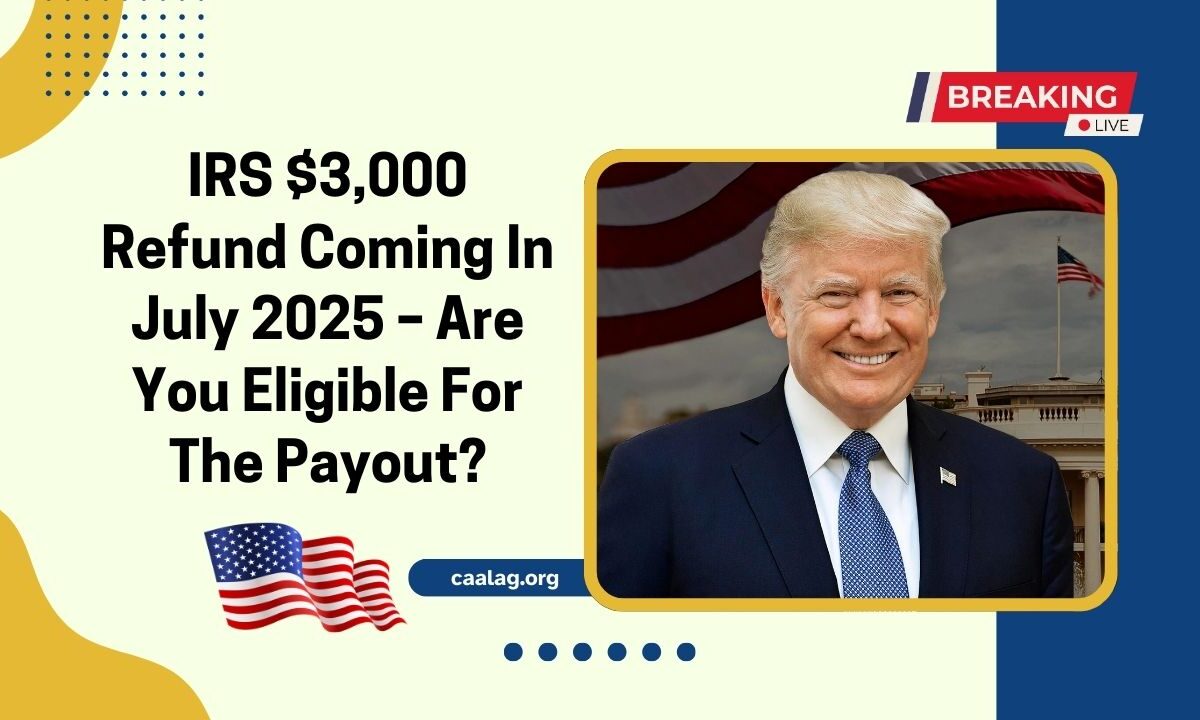The Internal Revenue Service (IRS) is preparing to issue a $3,000 refund to eligible taxpayers in July 2025. This targeted payment is not a new stimulus check but a refund adjustment based on 2023–2024 tax return reconciliations.
It is aimed at correcting over-withheld taxes, missed tax credits, or errors in previously processed returns. If you meet the income and filing criteria, you could be among the millions receiving this automatic payout.
Let’s break down the eligibility, payment schedule, refund breakdown, and what you should do to ensure your money arrives on time.
Who Qualifies for the $3,000 IRS Refund?
Not everyone will receive the full amount, but millions of Americans may qualify based on their most recent filings.
To qualify for the $3,000 refund, you must:
- Have filed your 2023 federal income tax return.
- Be eligible for one or more of the following credits:
- Earned Income Tax Credit (EITC)
- Child Tax Credit (CTC)
- Recovery Rebate Credit
- Education-related tax credits
- Withholding corrections or adjustments
- Have adjusted gross income under the following limits:
- $75,000 for single filers
- $150,000 for married filing jointly
Additionally, those who received only partial refunds or had mistakes in initial credit calculations could now receive the remaining balance as part of this reconciliation.
What Does the $3,000 Refund Cover?
This refund isn’t a one-size-fits-all payout. It’s a combination of credits and corrections, tailored to each taxpayer’s situation.
Here’s a breakdown:
| Credit/Adjustment | Estimated Maximum Amount |
|---|---|
| Earned Income Tax Credit (EITC) | Up to $1,200 |
| Child Tax Credit (CTC) | Up to $1,000 |
| Withholding Adjustments | Up to $800 |
| Other IRS Corrections | Varies (up to $1,000) |
Note: Not all taxpayers will receive the full $3,000. The exact refund will depend on your income level, tax filing status, dependents, and any adjustments from previous returns.
When Will the Refund Be Issued?
The IRS has released a tentative schedule for issuing these refunds. While dates may vary, most payments are expected to be distributed between late June and July 2025.
| Event | Expected Date |
|---|---|
| Refund Processing Begins | June 14, 2025 |
| Direct Deposit Refunds Issued | June 20–24, 2025 |
| Paper Check Refunds Mailed | June 25–30, 2025 |
| Payment Status Tool Updates | June 18, 2025 |
| Last Date to Qualify by Filing | July 30, 2025 |
If your 2023 return hasn’t been filed yet, you still have time. File by July 30, 2025, to potentially receive the refund.
How to Track Your Refund Status
Once the IRS begins processing payments, you can track the status through:
- The “Where’s My Refund” tool on the IRS website
- Your IRS online account (check for notices or balance updates)
- Secure mail or notices if you’re flagged for review
Tip: Ensure your bank account information and mailing address are current to avoid any delays.
Is the $3,000 Refund Taxable?
No. This refund is not taxable income. It will not impact your eligibility for any of the following benefits:
- SNAP
- SSI
- Medicaid
- Section 8 Housing
This payment is categorized as a tax correction, not a financial assistance or income-based benefit.
What Should You Do Now?
To prepare for the IRS $3,000 refund coming this July:
- Ensure your 2023 tax return is filed and includes any eligible credits.
- Double-check your personal details with the IRS, including your banking and mailing info.
- Avoid scams—the IRS will never ask for sensitive personal information through email, text, or phone calls.
- Check IRS tools regularly to track your refund or get notified of any delays.
- File before July 30, 2025, if you haven’t already filed your 2023 return.
The $3,000 IRS refund in July 2025 is a welcome adjustment for millions of Americans. Designed to fix tax return discrepancies and credit miscalculations from past years, this payout reflects the IRS’s push for greater accuracy and fairness.
By meeting the eligibility criteria and ensuring your return is complete, you may receive a substantial refund automatically—no new application required.
Stay informed, stay alert, and make sure you’re ready for your refund this summer.
FAQs
How do I know if I’m eligible for the $3,000 IRS refund?
You are eligible if you filed a 2023 tax return, claimed credits like EITC or CTC, and meet the income requirements.
Do I need to apply to get the refund?
No application is required. If your 2023 return is accurate and complete, the IRS will automatically send the refund.
Will the refund impact my eligibility for government programs?
No. The $3,000 refund is not taxable and does not count as income for programs like SNAP, SSI, or Medicaid.

